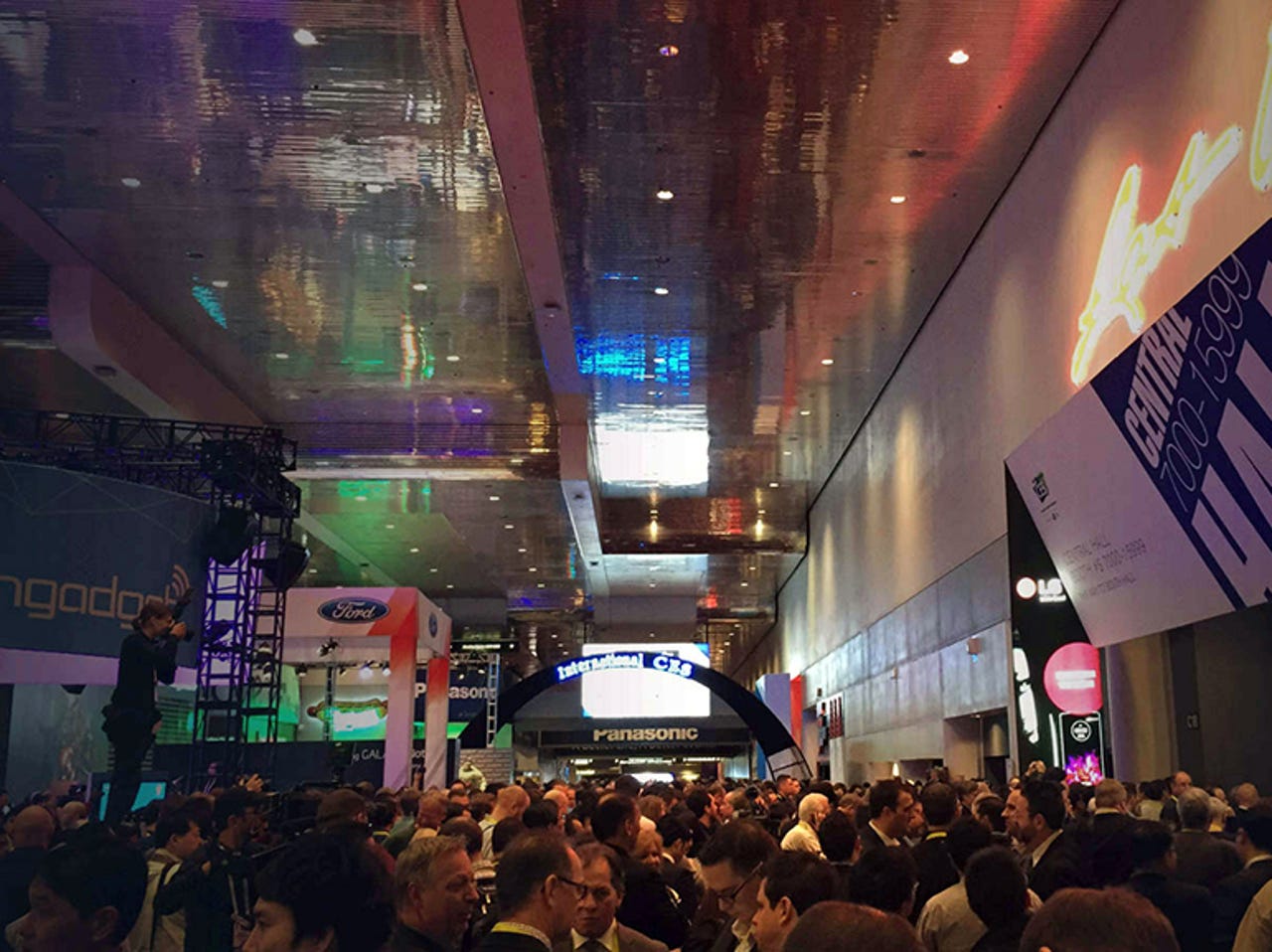What Microsoft will be doing at CES 2017

The CES hall -- where is the prominent Microsoft stand?
For years, the Microsoft stand at CES was the anchor of the giant central hall. As soon as you came through the doors, there it was, opposite Intel.
The year that Microsoft had Kinect games on the stand, the traffic jam of people playing, waiting to play, or just watching brought the front of the hall to a standstill. The Microsoft stand was where I first met Microsoft's genius scientist Steven Bathiche, showing off the Sidewinder gaming keyboard that solved n-key rollover for gamers -- and which paved the way to the detachable Surface keyboards using the same cheap optical sensors.
But even though Microsoft now makes its own hardware, it no longer has a flashy stand at CES. Instead, it has a private area for meetings with OEMs who make Windows devices and peripherals, and some press briefings (and maybe even a party at some point).
CES 2017
Those meetings with the industry have been ramping up over the last few years; talking to Steve Guggenheimer, head of Microsoft's Developer experience and evangelism division, his calendar looks so full he didn't think he'd make it onto the show floor.
Who does Microsoft talk to at CES? Sports leagues, telecoms companies, startups, toy companies -- as well as hardware makers and software companies, of course. "CES isn't a consumer show, it's a technology show," Guggenheimer says.
"There's a broad set of really smart, connected devices driving change to every industry. There's an incredible energy of startups and industries all trying to figure out how to use this technology."
He picked some key areas including augmented reality and virtual reality and mixed reality, plus IoT, robotics, bots, and cognitive services.
"This isn't the year that bots take over as the front end interface," he admits. "It's too soon. But it's smart to think about the future of your occasionally used app. It's hard to predict which directions are going to success but bite-sized access to information is going to come."
That's an area Microsoft is actively working on; the Singapore government chatbot Jamie that helps citizens find information on official websites is using Microsoft tools to start personalizing answers and you can use the new QnAMaker to turn an FAQ into a bot.
IoT is still emerging from the hype cycle too. "Lots of opportunity on the business side hasn't materialised yet," he admits. When the commercial side picks up, he expects it to start with companies saving money rather than making money.
Guggenheimer is at CES despite not being a product person, because the reason Microsoft is relevant to all of this is developers. "The energy is all about developers at the moment. In the last four years, it's gone from 'does Microsoft even get it?' to where the relevance of our platforms is in a pretty good spot."
Startups who want to reach the commercial market getting in touch with Microsoft shouldn't be a surprise given the position of Office and Windows, but it's the success of Azure and Office 365 that has a new generation of business-focused startups interested.
"The interest I get from people who want to touch commercial entities has increased a lot. More VCs are sending us startups who are focused on commercial areas; we're starting to see more of that type of VC connection into to the community than we would have seen a year or three years ago. It's a lot more about us reacting to people coming to us, rather than Microsoft going out and trying to get to people interested," he says.
Another chance for UWP?
Xbox likely won't have a big presence at CES; instead the console shows up at the big games conferences because it's still seen as a gaming platform -- even though Xboxs are used more for watching videos and listening to music than for gaming (gamers can get rather vocal if they think 'their' platform is getting 'taken away' from them by an emphasis on media usage).
Developers, though, have noticed the importance of media on Xbox and it's proving a bit of a gateway for them to Windows 10 with UWP apps.
"Xbox has a large base as a network and it's their starting point in some ways," Microsoft's Guggenheimer says. "Once they've done UWP for Xbox, they get that extension to the desktop for free." That's one way Microsoft's cross-device UWP strategy could succeed even without a critical mass of Windows phones (and maybe there will be a few of those at CES too).
